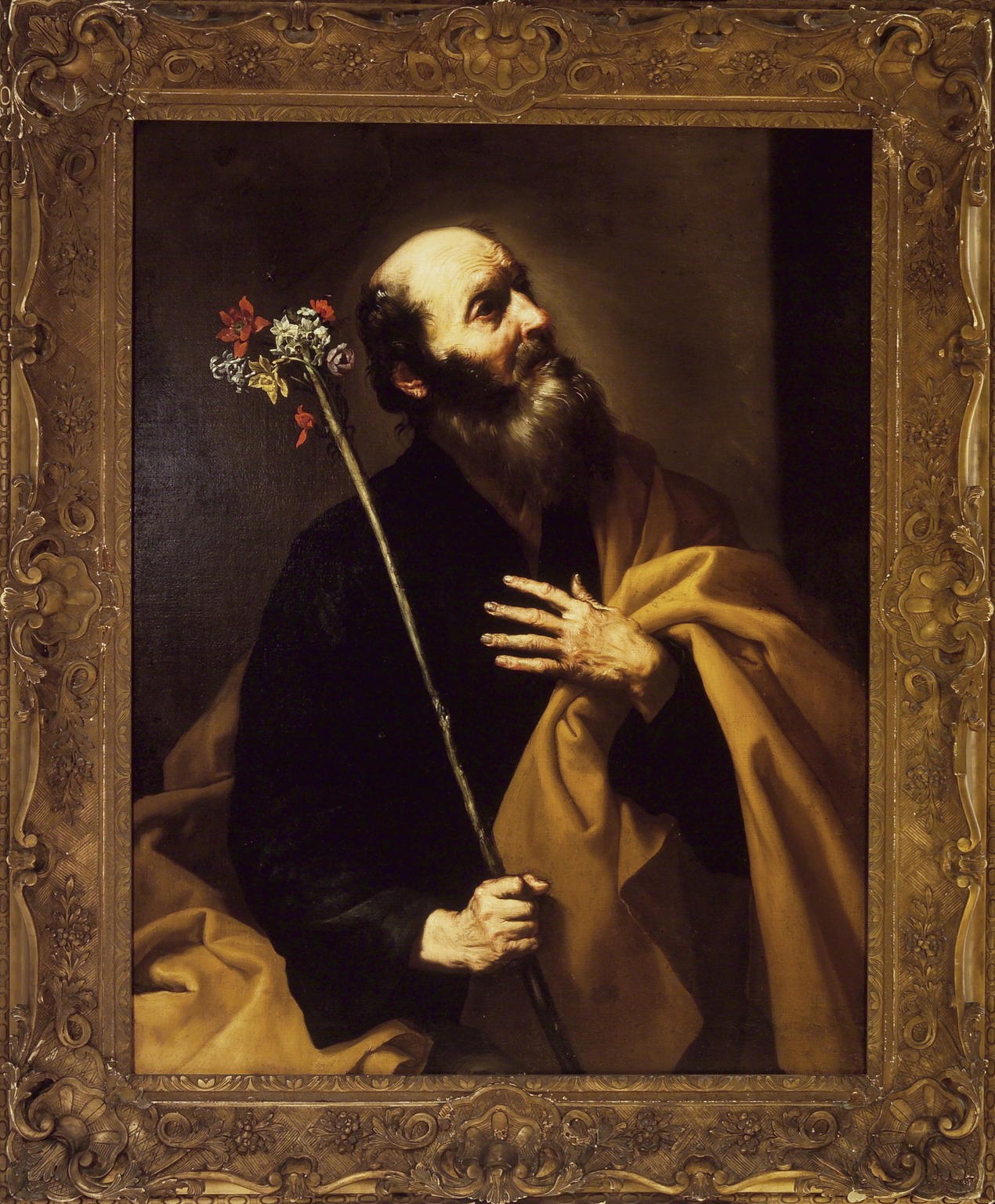Saint Joseph with the Flowering Rod
Jusepe de Ribera

Brooklyn Museum photograph
Object Label
Called “Lo Spagnoletto” (the little Spaniard) by his Italian clientele, the Spanish-born and trained Ribera made his career in Naples, where his major patron, the Duke of Osuna, served as viceroy to the Spanish Bourbon rulers of southern Italy. Following a Spanish tradition initiated by the famed painter El Greco (1541–1614), Ribera painted individual portraits of Christ’s intimates, including his father Saint Joseph and his disciples. According to apocryphal sources, suitors for the Virgin Mary’s hand were to present rods to the high priest of the Temple. When Joseph’s rod bloomed, he was identified as her betrothed. Ribera conveys the unexpected wonder of the moment with the lighting from above and the aged Joseph’s questioning hand gesture.
Caption
Jusepe de Ribera (Spanish, 1591–1652). Saint Joseph with the Flowering Rod, early 1630s. Oil on panel, 46 × 35 3/4 in. (116.8 × 90.8 cm) frame: 57 1/4 × 47 1/4 × 3 1/2 in. (145.4 × 120 × 8.9 cm). Brooklyn Museum, Gift of George D. Pratt, 11.563. (Photo: Brooklyn Museum)
Gallery
Not on view
Gallery
Not on view
Artist
Title
Saint Joseph with the Flowering Rod
Date
early 1630s
Geography
Place made: Europe
Medium
Oil on panel
Classification
Dimensions
46 × 35 3/4 in. (116.8 × 90.8 cm) frame: 57 1/4 × 47 1/4 × 3 1/2 in. (145.4 × 120 × 8.9 cm)
Signatures
Signed bottom center: "Jusepe Ribera/F"
Credit Line
Gift of George D. Pratt
Accession Number
11.563
Have information?
Have information about an artwork? Contact us at